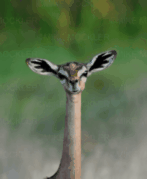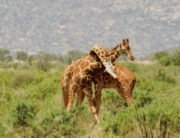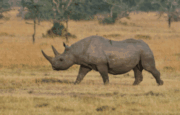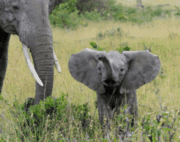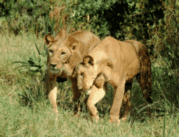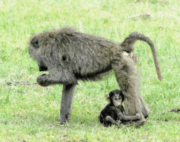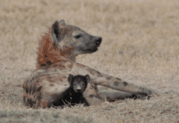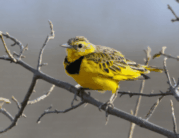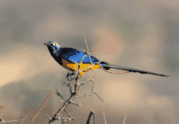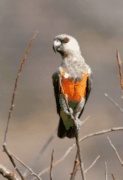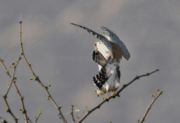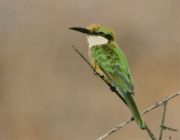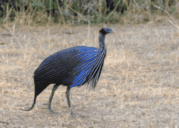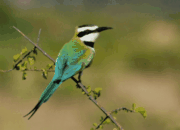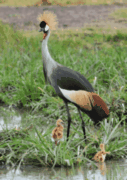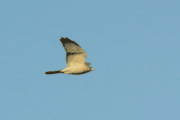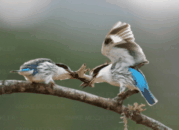|
Mike Mockler Kenya |
Below is Mike's report from his recent Kenya tour... KENYA: A LAND OF EXTRAORDINARY DIVERSITY
Returning to Samburu after an absence of more than twelve years, I wondered if I would enjoy the scenery and impressive wildlife as much as I had done many times in the 1980s and 1990s. Or would I still be frustrated by the crowds of safari vehicles in pursuit of big cats, often corralling them and turning this stunning game reserve into a race-track-cum-car park? After all, that was what had deterred me from returning to Samburu for more than a decade. Prior to this trip, Kenya's tourism had been at a low ebb following bad publicity, not least the terrorist attack on the Westgate Shopping Mall in Nairobi and the devastating fire at Nairobi International Airport. So I was not expecting to encounter large numbers of vehicles in the game parks, especially as I had deliberately avoided high season. In addition, at Samburu, one of the biggest lodges lies derelict after a flash-flood destroyed many of its rooms and the only road bridge over the river was washed away too. Consequently, traffic movements were reduced and both reserves were more tranquil than on previous visits. Local mammals include several attractive "Samburu Specials" such as elegant Beisa oryx, with bold black and white face-markings, reticulated giraffe, the loveliest of all the giraffes, and the handsome, rare Grevy's zebra. It was especially good to see endearing, long-necked gerenuks once again performing their balletic balancing acts, teetering on spindly hind legs to browse higher and presumably tastier vegetation. There were also numerous breeding herds of elephants, many with small calves. Predator sightings included four leopards and two lionesses with cubs which, thanks to an excellent guide, could be enjoyed without being surrounded by a crowd of vehicles. In such a harsh, craggy landscape, the number of striking and colourful birds may surprise the first-time visitor. As with the mammals, many of these are typical of this northern bush country. The exquisite lemon-yellow wings of the golden pipit, white plumes draped over the vibrant blue of the vulturine guineafowl and the eye-catching underparts of the orange-bellied parrot are just three examples of Samburu's vivid palette. However, none can surpass the golden-breasted starling with its iridescent blue upperparts, elegant long tail, staring white eye and gorgeous bright yellow underparts - an outrageously dazzling species. Other attractive cast-members include buff-crested bustard, white-headed mousebird, bare-eyed thrush, grey-headed kingfisher, white-throated bee-eater, Somali bee-eater and rosy-patched bush-shrike. Raptors are abundant too, in particular Africa's smallest bird of prey, the pygmy falcon. One pair of these fierce predators mated with the chestnut-backed female, bizarrely, perched on the back of the male for the coupling. Late afternoon is the time to enjoy Samburu. As day edges towards dusk, the colours of the rocky hills shift from amber to terracotta. Then at sunset, the distant hills turn from mauve to smokey-blue before becoming black silhouettes against the glowing evening sky. To the east of Samburu lies the less frequented Shaba Game Reserve which I first visited 24 years ago when it was opening up for tourism. The scenery is impressive but the wildlife back then was scarce and extremely nervous, clearly unfamiliar with people in vehicles. On this latest visit, I was surprised to find this still to be the case more than two decades later: every oryx galloped off into the distance at the approach of any vehicle and even a large herd of reticulated giraffes hurried away. Likewise, a pair of nomadic male lions and a family of three cheetahs were all very timid, obviously not used to vehicles. The bird highlight at Shaba was a sighting of one of East Africa's rarest birds, Williams's lark. A huge black mamba, at least 9 or 10 feet in length, was the second snake encounter following a good look at a fully grown puff adder the day before. IN THE SHADOW OF MOUNT KENYA
Kenya's rhino population may be worryingly small but what is even more disturbing is that only two countries in Africa (South Africa and Namibia) hold larger rhino populations. Consequently, major private rhino sanctuaries like Ol Pejeta Conservancy, Lewa Wildlife Conservancy and Ol Jogi must employ intensive security measures: electrified fences, armed patrols, look-out towers, 24-hour surveillance and even small drones with cameras. Despite these measures, some rhinos have been killed in recent years. Ol Pejeta is the largest black rhino sanctuary in East Africa and at 90,000 acres, represents a precious wildlife resource. The conservancy is home to elephant, Jackson's hartebeest, Grevy's zebra, lion, cheetah and wild dogs, along with many other more abundant species such as warthog, silver-backed jackal, reticulated giraffe, common zebra, Grant's gazelle and Thomson's gazelle . Ingeniously designed "corridors" allow all species except rhino to come and go through gaps in the fencing. Any unauthorised human incursion is quickly spotted and armed guards are deployed immediately. From the tent at night lions could be heard calling, usually in the distance but on one night at thrillingly close range. Spotted hyenas that had a den near the camp were also vocal every night. In the middle of the day, elephants came to drink at the water-hole in front of camp, along with many impala, waterbuck and eland. Birds included many migrants from Europe such as lesser kestrel, Montagu's, pallid and Eurasian marsh harrier, willow warbler, European bee-eater, barn swallow and Caspian plover. Among the many resident species were striped kingfisher (a pair seen "courtship-feeding"), black-headed oriole, long-tailed widowbird and sulphur-breasted bush-shrike, all as enchanting as their names suggest. LUSH GRASSLANDS OF THE SOUTH-WEST
Recent years have seen a sea-change in the Mara as new conservancies have opened in partnership with the Masai people. Today, more and more visitors are spurning large, hotel-style lodges (which are still common) and favouring small safari camps, some with as few as six tents. In some of these new conservancies, measures have been introduced to promote good practice and sensitivity towards the environment and its wildlife. The number of camps is controlled and, in some cases, the maximum number of vehicles permitted at a wildlife sighting is five. A huge pride of lions and two male cheetahs understandably attracted considerable attention but the guides showed a commendable level of self-regulation. Generally speaking, the signs are encouraging. It's not all perfect, however. There are still greedy and unscrupulous people prepared to circumvent the regulations with plans for new or enlarged camps and there are selfish tourists willing to bribe their driver/guide to break the rules that were designed to protect the wildlife and the environment. Our small camp, in an idyllic, secluded location, featured comfortable tents, with bucket showers. Any water left unused in the buckets was an attraction for the local vervet monkeys - not only for drinking but also for a cool bath in the heat of the day. Mammal-viewing was good with impressive breeding herds of elephant and buffalo, zebras galore, wildebeest (the migration herds were further south in Tanzania), eland, topi, Coke's hartebeest, Thomson's gazelles and Grant's gazelles. The most satisfying viewing involved a leopard mother, thought to be the daughter of Zawadi (Shadow of "Big Cat Diary" fame), who had hidden her tiny cubs among rocks and dense vegetation. The cubs were only 4 weeks old, with milky, blue eyes that still couldn't focus. Hidden in heavy shadow and long grass, they were difficult to see well, let alone photograph, but they were a source of delight on several occasions. Birdwatching was excellent with resident species vying for attention along with the scores of migrants. A pair of crowned cranes were doting parents, tending two small fluffy chicks that, worryingly, seemed to have caught the attention of a martial eagle that was regularly perched nearby. Nearby, a pair of hamerkops were building a new nest with a demonstration of the "wattle and daub" construction technique used by our ancient forbears. On one morning, European white storks in their hundreds were seen spiralling upwards in search of warm thermals that would help them to drift northwards towards Europe. It's not unusual to see big numbers of European white storks in East Africa at this time of year but what occurred the following morning was truly extraordinary. Levant sparrowhawks (Accipiter brevipes) breed in eastern/south-eastern Europe through to western Asia and migrate south in autumn to over-winter in warmer climes. They are regularly seen in huge concentrations on migration, notably passing through Bosporus and Israel. However, where they go after that is a mystery. Despite a few records in sub-Saharan Africa, little is known about the wintering areas of this species. Kenya has only a handful of records of single birds and, occasionally, small flocks. So to see hundreds of these attractive raptors was very, very exceptional! The event began with a sighting of a few medium-sized accipiter hawks flying around and perching in small trees and bushes. As I had never before seen a Levant sparrowhawk in Africa in well over 100 safaris (my only previous encounter was in Israel over 20 years ago), it was a few minutes before I realised what species I was seeing. To see just a few of them was exciting enough. Little did I know what was to come. More were now spotted, perched in scattered trees and bushes across the plain, probably forty or fifty in total. Then even more lifted up from other trees and began forming larger and larger flocks as they tried to find morning thermals. Soon four different "stacks" or "columns" were visible, each one containing between 80 and 150 birds spiralling upwards on the warming air. As these rose high in the sky, the four "stacks" coalesced and the massive flock, like a swarm of mosquitoes, drifted away towards the north or north-east. A few minutes later, even more appeared from behind a low hill and they too circled upwards on thermals before drifting away in the same direction. It was difficult to count the swirling birds as they floated away but a minimum of 600 was a conservative estimate. It was a sensational and unforgettable finale to a marvellous Kenya tour!
|
|
